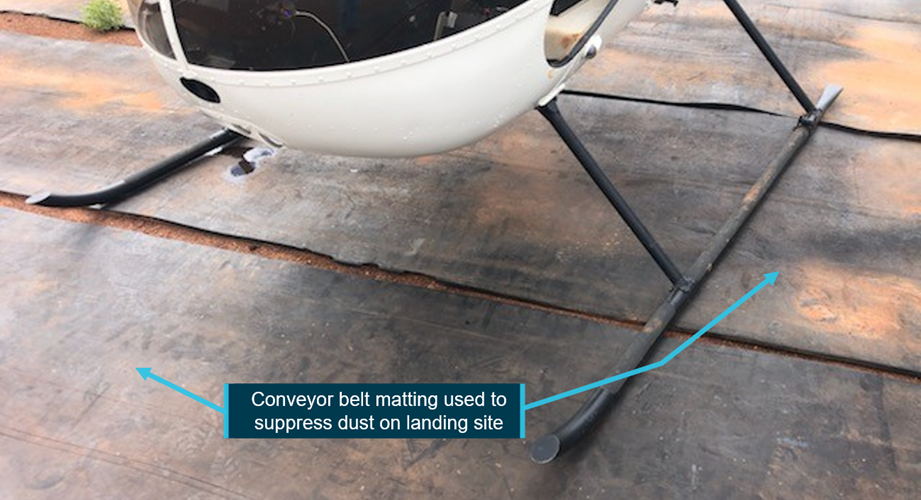
The hard landing of a Robinson R22 helicopter on a private property near Derby, Western Australia last year was an unfortunate outcome for the operator who, in addressing one problem, inadvertently created another hazard that resulted in substantial damage to the helicopter.
An occurrence brief* published by the Australian Transport Safety Bureau (ATSB) into the 23 December 2020 accident details how the pilot of an R22 was preparing to take off from a helicopter landing site covered with rubber matting made from conveyor belts as a means of limiting an in-flight visibility condition known as ‘brownout’. Brownout can obscure nearby visual references necessary for a pilot to control a helicopter when near to the ground, which can cause spatial disorientation and loss of situational awareness leading to an accident.
As the helicopter became airborne, it moved backwards slightly due to a headwind, resulting in the heel of the skid sliding between two overlapping sheets of matting. As the pilot attempted to gain height, the skid did not free itself and the helicopter pitched back and rolled to the left.
The pilot recognised the early onset of dynamic rollover and attempted to recover by lowering the collective. While that action prevented a rollover, it resulted in a hard landing and substantial damage to the helicopter. The pilot was not injured.
As a result of this incident, the helicopter operator has taken a number of positive safety actions including the removal of rubber conveyor belt matting from all company helicopter landing sites. The operator also issued an internal safety alert to its pilots reminding them of the requirements to ensure company helicopter landing sites are clear of any objects that could cause dynamic rollover on take-off, and how dynamic rollover can occur and the appropriate recovery technique.
*Occurrence briefs are concise reports that detail the facts surrounding a transport safety occurrence, as received in the initial notification and any follow-up enquiries by the ATSB. Because occurrence briefs are not investigations under the Transport Safety Investigation Act 2003, the information within them is de-identified, and provides an opportunity to share safety education messaging in the absence of an investigation.


